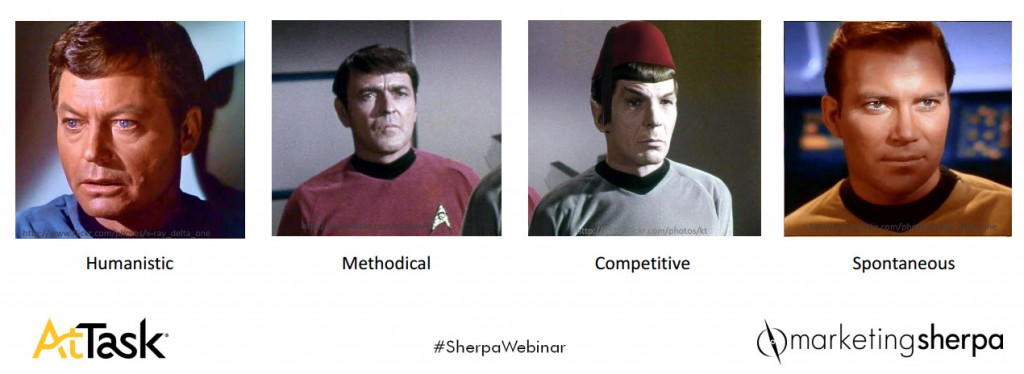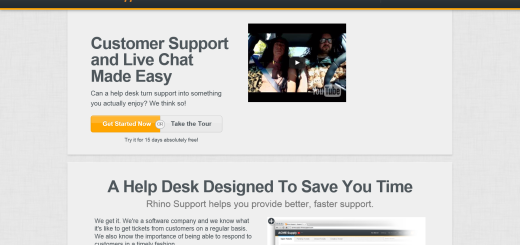How Customer-Centric Optimization Can Increase Conversion
One Call Now, is a message notification service that delivers mass automated phone calls, text messages and emails. Needing to establish its business in the professional sphere, One Call Now redesigned its website, leaning heavily on customer centricity and testing. Jacob Baldwin, of One Call Now, lead a presentation at the 2013 Lead Gen Summit, where he showed how customer centric website design, and marketing towards “customer personas” can increase sales conversion by as much as 81%. His presentation is available here at MarketingSherpa.com. The slides and case studies are also available. Baldwin began the presentation with One Call Now’s old website, and their reasons behind a total design optimization: They wanted better lead generation, better sales conversion.
Baldwin shows a progression of slides to explain their optimization process, the choices they made, why they made them, and how the new pages tested compared to the originals. When They Started The Site Redesign They Hoped To Improve The Following Areas:
Thought Sequence: Create a logical path for visitors to consume information.
Page Layout: Help visitors find information and get answers in a logical, simple, way.
Imagery: More relevant, specific imagery as opposed to generic images.
SEO: Take advantage of meta tags, URL structure, etc.
Segmentation Model: Who were they marketing to? How do those people make decisions?
Messaging: Multiple messages on the web pages needed to be turned into one concise message.
Baldwin and his team tackled every point, redesigned, tracked every change and tested them. The case tests revealed that the controls were crushed next to the new treatments. The conversion boosts were significant from nearly every redesign. One of the most interesting conversion boosts involved their call to action. They wanted to make their CTA more effective, lowering the chance of paralyzing visitors with too many choices, so they consolidated their CTA buttons into one small area of the homepage’s bottom right corner. Their conversion had a significant lift. Then, the most interesting part of the video happens around the 11 minute mark where Baldwin talks about Star Trek. His marketing team created four customer personas based on the Star Trek characters for segmentation purposes: humanistic, methodical, competitive and spontaneous, and doing this allowed One Call Now to properly categorize its audience and plea to them as effectively as possible. They chose Star Trek in order to make it fun for the marketing team but also to put a face with the personality type. 
The Humanist: A touchy-feely type that enjoys reading about personal interest stories.
The Methodical: The logical type, the 16% who will probably read everything available to them before making a decision.
The Competitive: This type of person wants the best of the best. They want to WIN.
The Spontaneous: Knows what they want and are ready to purchase at any time. Doesn’t need to talk to sales people or read all of the copy before making a purchasing decision.
“Plotting out important drivers in the customer decision-making process allowed the team to understand motivations at every stage of the process.” What it all came down to was that One Call Now, optimized their site around what would best convert these four personas into customers from their copy to their design. They changed the language on the site and made it be more vernacular, direct, and used terms that would be easy to understand. The new segmentation model also drove basic navigation, color scheme, basic layout and they added trust indicators or “trust seals” at the bottom of the page to give instant credibility and establish trust with their visitors. The video is full of marketing jargon and in depth case-studies which are great for anyone in the industry but for companies with a smaller marketing department, or small businesses owned and operated by only a few people, everything can be translated into one idea: Customer-centricity.
What I took from their case study more than anything is that it pays to care about your customers. If you put their needs first when writing, marketing, or designing your website, you’re going to be ahead of the game. When you think of what visitors need and want they respond. It just makes sense. Many websites are simply too egocentric, they fail to identify with their customers and their needs. The methods used to achieve Baldwins success were clever, sure, but it’s also common sense. The biggest takeaway is that every business can benefit from making their website more customer-centric. When a visitor comes to a site asking themselves, “what’s in it for me?”, your website should answer them right away.They didn’t necessarily reinvent the wheel by making sure their copy was customer-centric but they certainly made a strong case proving that it works




